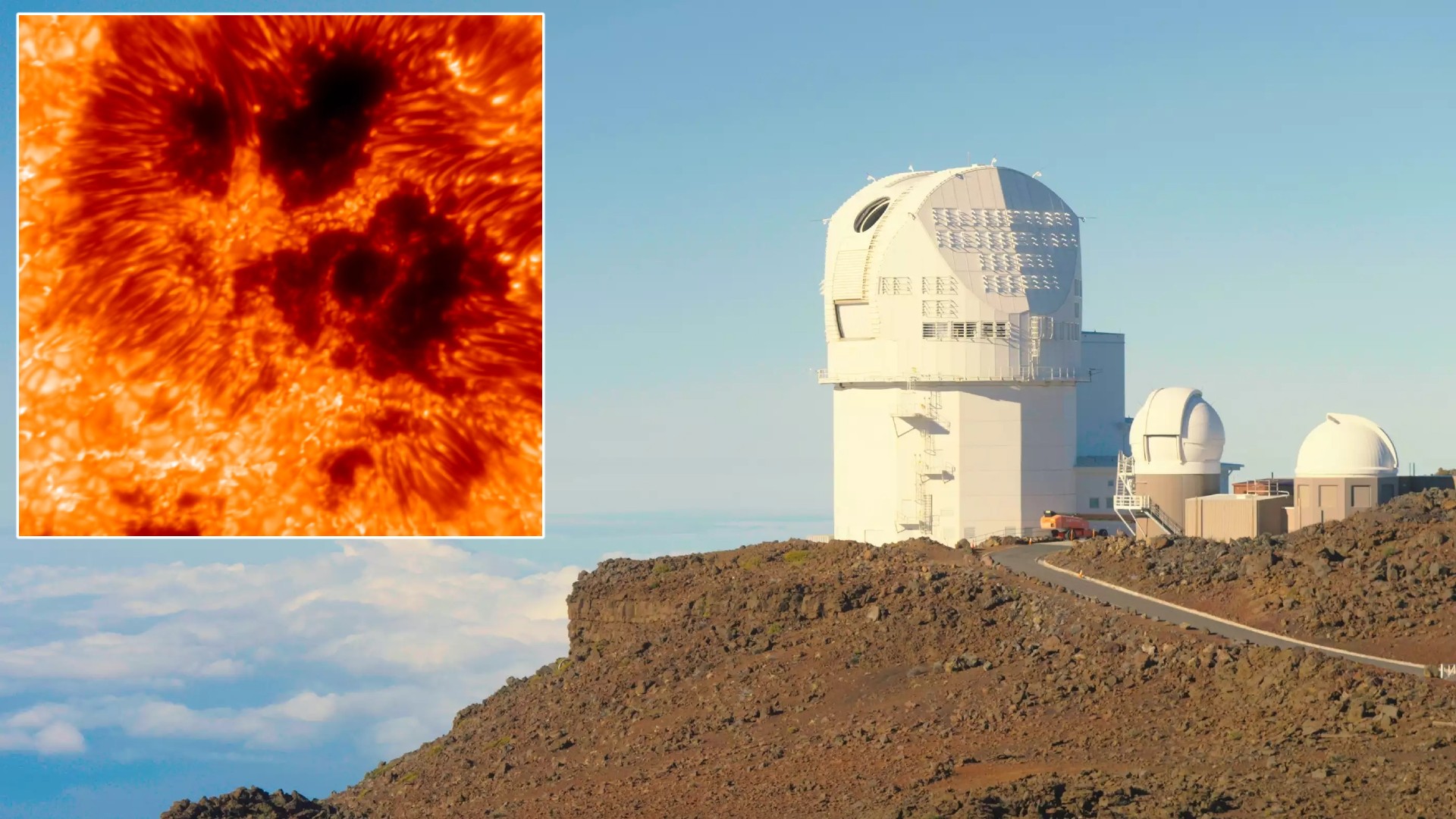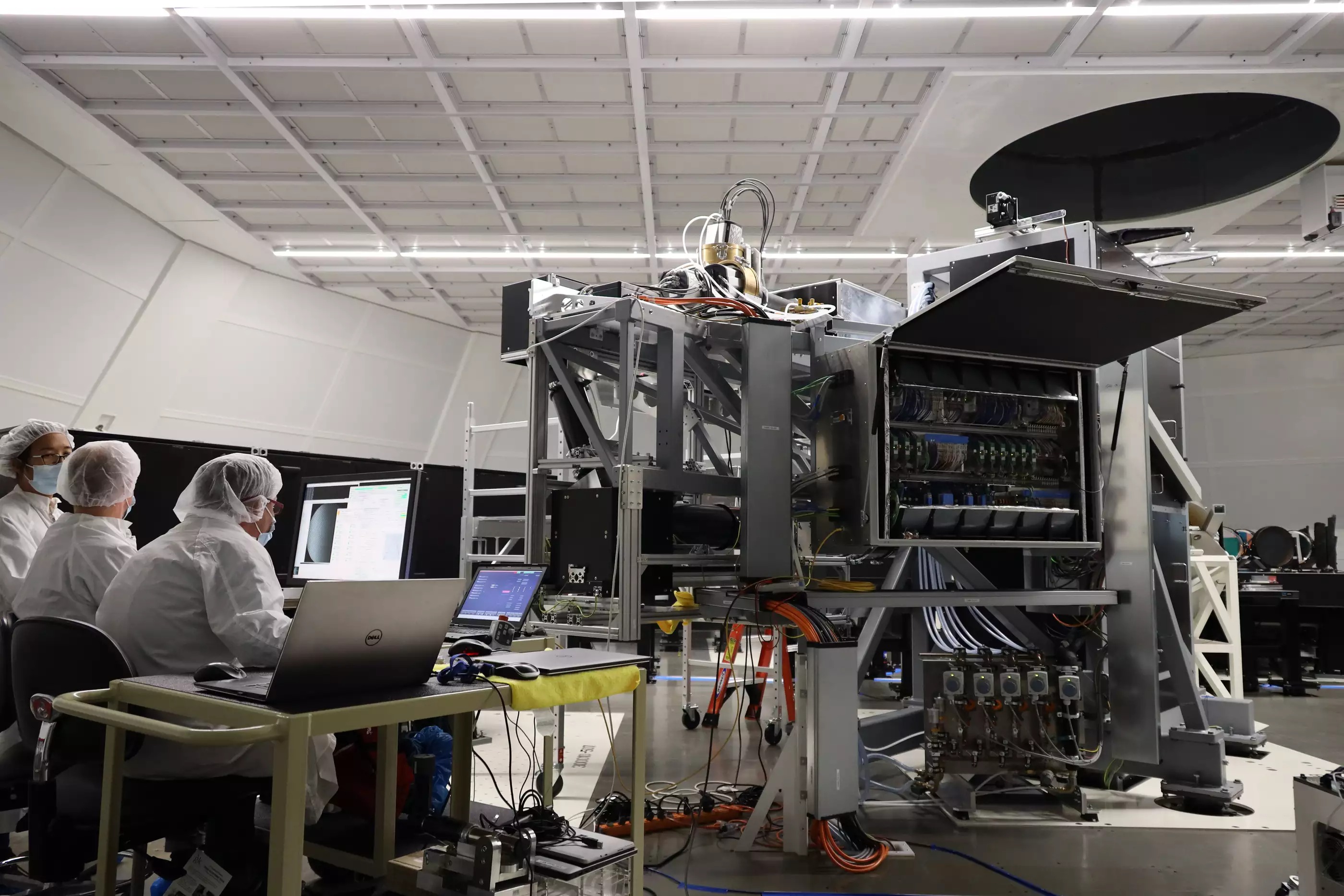World's largest solar telescope gains powerful new 'eye' to study the sun's secrets
"The instrument is, so to speak, the heart of the solar telescope, which is now finally beating at its final destination."

The world's largest solar telescope has gained a powerful new "eye" that promises deeper views into the workings of our sun than ever before, scientists announced on Thursday (April 24).
The Daniel K. Inouye Solar Telescope, which eyes the sun from its perch atop a mountain on the Hawaiian island of Maui, has been sending home stunningly detailed views of the surface of our star. The observatory, which is funded by the U.S. National Science Foundation, is designed to scrutinize the solar atmosphere and the sun's magnetic field for tiny features that might reveal answers to some of the fundamental solar mysteries. The telescope's already-sharp vision has now been boosted significantly thanks to a new instrument designed to maximize the information gleaned from the sun's light, scientists said on Thursday.
"The instrument is, so to speak, the heart of the solar telescope, which is now finally beating at its final destination," Matthias Schubert, who is the project scientist for the instrument at the Institute for Solar Physics in Germany, said in a statement.
The instrument, known as the Visible Tunable Filtergraph, or VTF, is the fifth and most powerful instrument to be added to the Inouye Solar Telescope. It is designed to study the regions of the sun where eruptions ignite — the visible surface, or photosphere, and the invisible layer above, known as chromosphere — with the highest level of precision of any solar observatory. The newly-installed VTF recently looked at the sun for the first time and, even in its ongoing technical test phase, is already delivering on its promise to resolve and image very fine details on the sun, scientists say.

The image above features a sunspot on the sun's surface spanning a whopping 241 million square miles (625 million square kilometers), yet each pixel covers 6.2 miles (10 kilometers) on the sun's surface, according to the statement. Sophisticated computer processing during forthcoming science operations from VTF will sharpen the images even more and resolve even smaller structures on the sun, scientists say.
Researchers at the Institute for Solar Physics in Germany have been developing VTF for the past 15 years, nearly the same duration as the Inouye Solar Telescope's own development. What makes the instrument so special is its ability to analyze sunlight in exceptional detail. VTF hosts two devices called interferometers that dissect sunlight into its fundamental components. Functioning as a sophisticated color and polarization filter, they select narrow slices of the sun's light spectrum to create hundreds of sharp images per second.
The collected data helps scientists unravel the complex interplay between the hot plasma and magnetic fields that drive solar eruptions, according to the statement.
Breaking space news, the latest updates on rocket launches, skywatching events and more!

"VTF enables images of unprecedented quality and thus heralds a new era in ground-based solar observation," Sami Solanki, director of the Max Planck Institute for Solar System Research in Germany, which is a partner in the project, said in the statement.
The Inouye Solar Telescope is designed to operate for 44 years, which should cover four of the sun's roughly 11-year solar cycles. And in that time, its suite of instruments will likely change.
"The real power in the Inouye Solar Telescope is its flexibility, its upgradability," David Boboltz, the associate director for the Daniel Inouye Solar Telescope, previously said. "It's like having a Swiss Army Knife to study the sun."
Join our Space Forums to keep talking space on the latest missions, night sky and more! And if you have a news tip, correction or comment, let us know at: community@space.com.

Sharmila Kuthunur is a Seattle-based science journalist focusing on astronomy and space exploration. Her work has also appeared in Scientific American, Astronomy and Live Science, among other publications. She has earned a master's degree in journalism from Northeastern University in Boston. Follow her on BlueSky @skuthunur.bsky.social
You must confirm your public display name before commenting
Please logout and then login again, you will then be prompted to enter your display name.
